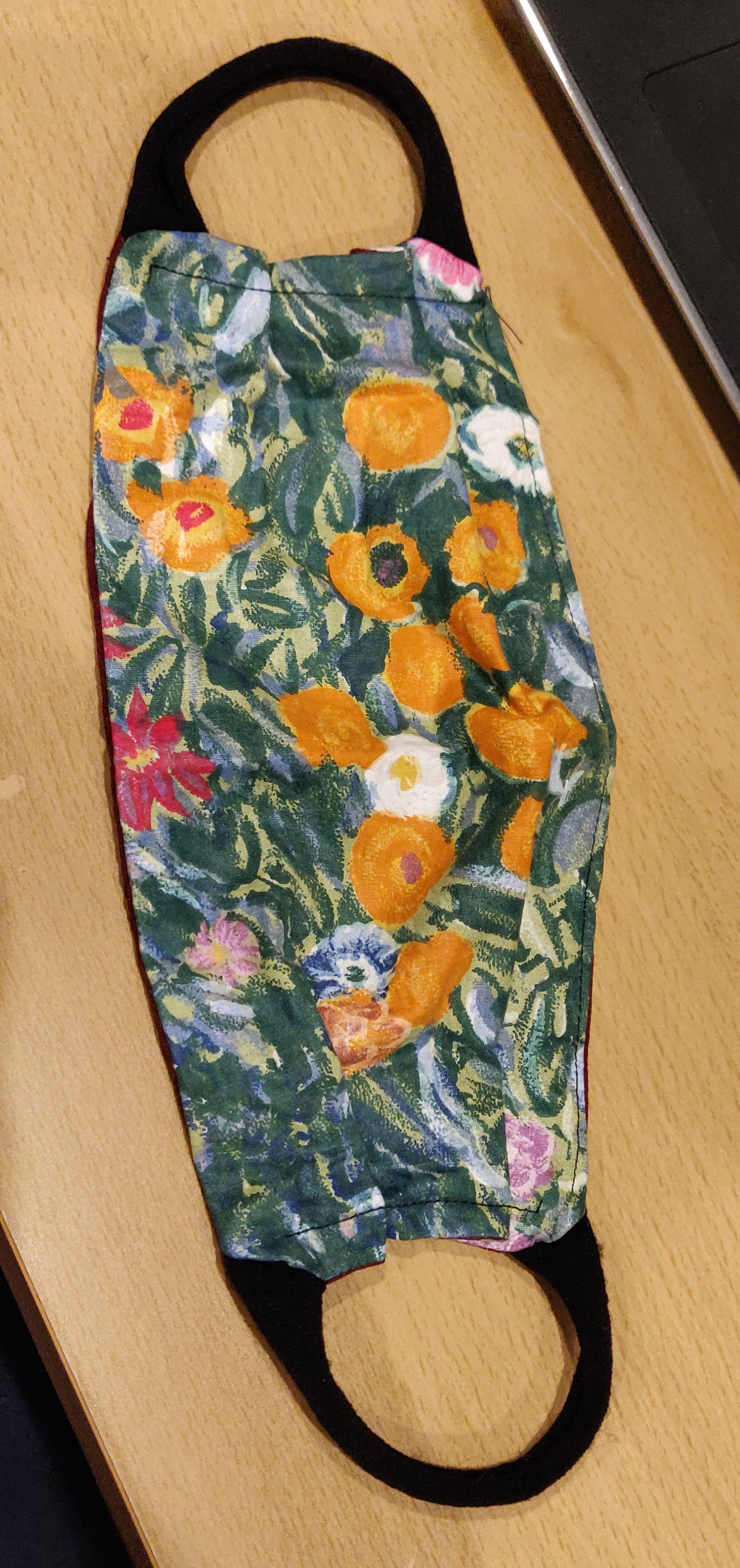Context:
The informant (MS) is a San Franciscan in her twenties who lives in a small apartment in Bernal Heights. She made these masks for my parents and I for use during the COVID-19 pandemic. California legislators issued an order to shelter in place and leave home only for essential errands. The government has recommended the use of protective masks in order to lessen the likelihood of respiratory transmission. She taught herself to sew the masks by reverse-engineering a homemade mask given to her by a neighbor and by watching several instructional you-tube videos. She made them because “it feels more personalized and cute rather than wearing the medical store bought masks.” She told me that it was “a fun project to occupy my time.”
Text:

Thoughts:
This is but one example of the many folkloric responses to the COVID-19 pandemic. In the early stages of the pandemic, authorities told us that masks would not help to protect us, a statement which intended to prevent surgical mask hoarding and mask shortages for healthcare workers. The CDC now recommends the use of cloth face coverings and has instructions published on their website on how to construct cloth masks from various household items such as t-shirts, bits of extra cloth, bandanas, and elastic. The construction of these homemade masks, owing to the difficulty of obtaining factory-made surgical masks, has proliferated as a form of expressive material culture in its own right. This mask, with its floral design, improvised folds, and double-sided fabrics is an example of one of these expressive, fashionable, yet practical coronavirus masks. For my informant, who has been unemployed due to the virus, the home project of creating these masks has helped to pass the time while in quarantine. It is also a means of helping out her family and friends. The colorful design expresses an indomitable playfulness and aesthetic concern invested even in the practical, state-mandated, and utilitarian cloth mask. It seems to express hope during the pandemic, or at least a care for preserving creativity and self-expression through what one wears. These masks have had their own fashion lives in the US, changing and responding to changes of style. People have been adapting their masks to express their own identities and even political beliefs. They have become a visual symbol for life in the time of coronavirus and a platform for self-expression and stylization throughout the suppressive necessities of social distancing.
